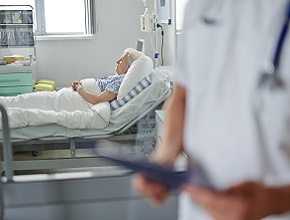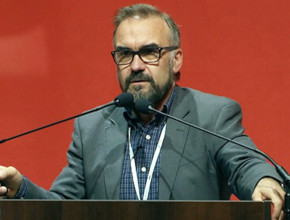Dr Fayez Alshamsi, assistant professor of internal medicine at United Arab Emirates University and coauthor of Surviving Sepsis Campaign 2021 guidelines, and Dr Roman Jaeschke comment on fluid and antibiotic administration in patients with sepsis in the latest McMaster Perspective episode.
For part 1 of the interview, click here.
Roman Jaeschke, MD, MSc: Good morning, welcome to another edition of McMaster Perspective. For the last 3 reiterations I have been involved in Surviving Sepsis Campaign—first as an author, and now as an outside observer—and I will try to record interviews with the most prominent authors of those guidelines. I would like to introduce Dr Alshamsi, who played an important role in those practice-defining guidelines. Dr Alshamsi, would you mind introducing yourself to us?
Fayez Alshamsi, MD: Thank you, Professor, and thank you for the invitation. My name is Fayez Alshamsi. I’m an assistant professor of internal medicine in the College of Medicine and Health Sciences at the United Arab Emirates University here in the United Arab Emirates. I am also an intensivist and I provide clinical services in affiliated hospitals. And I happened to participate in the Surviving Sepsis [Campaign] guidelines’ latest edition as a methodologist in the screening [and] early resuscitation section.
Roman Jaeschke: Well, these are the most interesting pieces of action in sepsis during the first few hours. And we’ll go into individual recommendations. Thank you for being with us, let’s start. The other issue that I see here is that fluid resuscitation with 30 cc/kg over the first 3 hours [has been] maintained over the last 15 years, and I still remember a few hundreds of emails exchanged over a decade ago about “Is this number correct or not?” Could you update us on this discussion?
Fayez Alshamsi: Well, the discussion still was lengthy on this question, and we looked at 3 different systematic reviews around the amount of fluid, what the right amount is. Interestingly, the range was huge and also the bulk of the population was perioperative patients or patients from cardiac surgery, so not directly related to sepsis. On the other hand, this recommendation now became a weak recommendation. The reason the 30 mL stay in the guidelines [is] that over time it kind of became the standard of care. If you look at the 3 large randomized controlled trials (RCTs) published [in the protocols] on the management of sepsis versus usual care, the amount of fluids in both arms was ~30 mL/kg at randomization, so it became the norm as a new standard of care, but the strength of recommendation now is weak. It’s a suggestion. It used to be a strong one, now it’s a weak [one], acknowledging the gap in the literature.
Roman Jaeschke: So far we were talking about having an open mind to sepsis: use different tools, [do] not rely on one [tool] for screening, consider it [sepsis] in an undifferentiated but ill person, be at the bedside, use capillary refill [time], infuse fluids relatively early for people who are hypotensive, and use lactate [levels]. To finish this early resuscitation, any discussion on timing of antibiotics? What could you tell us here?
Fayez Alshamsi: You can see that the recommendation used to be 1 or 2 lines. Now, again, [in] this iteration of the guidelines, we had to elaborate further, and the reason is [that] some evidence came out regarding the timing of antibiotics, especially in the not-so-sick population. Now, what we give... We broke it down by what the clinician thinks is the pretest likelihood of septic shock or severe sepsis, I mean, in those cases there’s no question that the recommendation is to give antibiotics straight away as soon as possible.
Roman Jaeschke: So, if your suspicion is very high?
Fayez Alshamsi: Correct. The issue is with the patients who are not so sick and they’re still on the fence, you’re not so sure [whether] it’s an infective etiology or not an infective etiology. [In] those patients, we suggested, based on the literature, that you can afford to do a rapid evaluation [to check] whether that’s an infective cause or not, and conclude everything, and have your antibiotics given within 3 hours if you end up finding an infectious etiology. Again, we had to listen to the literature because we also have seen some concerns of... If you push people so hard to give antibiotics within 1 hour, there is a risk that you might misdiagnose patients as having sepsis, treat them as [in] sepsis, and you might miss another diagnosis and patients might get harm.
Roman Jaeschke: So, essentially what you are saying is “Don’t put in these situations a sepsis label, which will close your mind from considering other possibilities.”
Fayez Alshamsi: Yes, precisely, that’s the message we [are providing].
Roman Jaeschke: Professor Alshamsi, I will finish here. I will be trying to talk to other authors of Surviving Sepsis Campaign. I want to congratulate you on not only being part of this Campaign but also on representing your part of the world, with a few of your colleagues, in these guidelines, probably most prestigious for intensivists, which truly guide how we deal with patients, and I congratulate you on being part of this process. Thank you very much.
Fayez Alshamsi: Thank you, sir. Thank you.
 English
English
 Español
Español
 українська
українська










